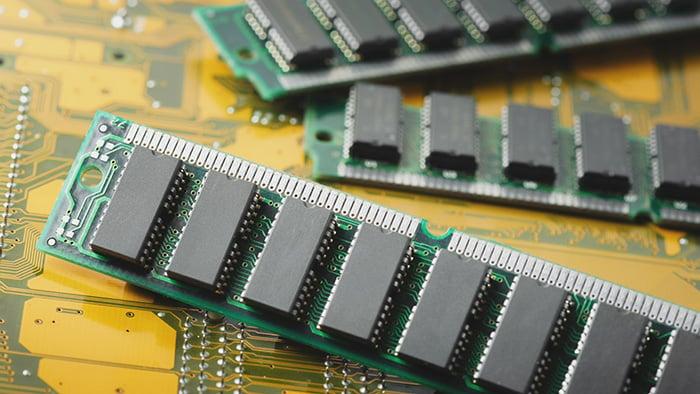Combining different types of RAM is a relevant and frequently discussed topic in the field of computer science. RAM plays a vital role in system performance and is essential for the efficient operation of a computer. In this article, we will discuss the important considerations and best practices for combining different types of RAM to optimize system performance and capacity. We will explore key techniques and recommendations for effective RAM configuration, aiming to provide readers with a comprehensive understanding of this crucial topic in the field of information technology.
Considerations on RAM memory types
RAM is one of the most important components in a computer, as it directly influences the processing and data storage capacity. When considering the types of RAM, it is important to understand how to combine different types to optimize system performance. It is essential to understand the characteristics of each type of memory to ensure compatibility and avoid incompatibility and performance issues.
There are several types of RAM available, including DDR, DDR2, DDR3, and DDR4. When combining different types of RAM, it is crucial to consider the speed, capacity, and latency of each module. In addition, it is important to ensure that the motherboard supports the combination of different types of memory and to check if there are any specific settings that need to be adjusted in the BIOS. When combining different types of memory, it is important to follow the manufacturer's recommendations and perform stability tests to ensure proper system operation.

Compatibility between different types of RAM memory
RAM is essential for a computer to function properly, and it is often necessary to combine different types of memory to meet the needs of your system. However, it is crucial to understand this in order to avoid conflicts and ensure optimal computer performance. Here are some important tips on how to combine different types of RAM effectively:
First, check the capacity and speed of your RAM. Make sure the capacity and speed of the different types of RAM are compatible with each other to avoid performance conflicts. Additionally, when combining different types of RAM, it is essential to consider the compatibility of the memory modules with the motherboard. Not all motherboards support all types of memory, so it is important to consult the motherboard manual or the manufacturer's website to check compatibility. It is recommended to use memory modules from the same manufacturer and from the same line to ensure optimal compatibility.

RAM memory combination recommendations
How to combine different types of memory RAM
Mixing different types of RAM can be a challenging task, but with the right recommendations, you can maximize your system’s performance. When adding or upgrading your computer’s RAM, it’s important to consider the capacity, speed, and compatibility between modules. Here are some recommendations for combining different types of RAM:
- Capacity: When combining different types of RAM, it is important to consider the capacity of each module. Make sure that the total installed capacity is adequate for the system needs. It is recommended to use modules of equal capacity to avoid possible conflicts.
- Speed: RAM speed can significantly impact system performance. When combining different types of RAM, try to use modules with similar speeds to ensure synchronization and avoid performance bottlenecks.
- Compatibility: Check the compatibility of RAM memory modules with your system's motherboard and processor. Not all types of RAM memory are compatible with each other, so it is essential to check the specifications of your hardware before combining.
By following these recommendations, you will be better prepared to combine different types of RAM efficiently and safely, ensuring better performance and stability for your system. Remember to always follow the manufacturer's guidelines and consider your computer's specific needs before performing any hardware upgrades.

Best practices for maximizing system performance
How to combine different types of RAM
Combining different types of RAM can be an effective strategy for maximizing system performance. However, it is important to understand best practices to ensure that the combination is done correctly and optimally. Here are some tips to help you combine different types of RAM:
- Refer to your motherboard manual: Before combining different types of RAM, it is crucial to consult your motherboard manual to see which types and amounts of memory are supported. This will help ensure that the combination is compatible and will work properly.
- Combine memories with similar speeds: When combining different types of RAM, try to choose modules with similar clock speeds. This can help avoid incompatibility issues and ensure more consistent performance.
- Consider the capacity and type of memory: In addition to checking clock speeds, it is important to consider the memory capacity and type when combining different modules. Try to combine memory with similar capacities and the same type (e.g. DDR3 or DDR4) for optimal results.
By following these best practices, you can effectively combine different types of RAM and maximize system performance. However, it is always recommended to do additional research and, if necessary, consult an IT professional to ensure that the combination is done safely and efficiently.
In conclusion
We hope this article has provided you with clear and useful information on how to combine different types of RAM. It’s important to remember that combining different types of memory can impact your system’s performance, so it’s essential to do your research and consider your computer’s specific needs before making any changes. Additionally, always consult a qualified IT professional if you have any questions or concerns. Thank you for reading and we wish you success in optimizing your computer’s RAM. Thank you.

